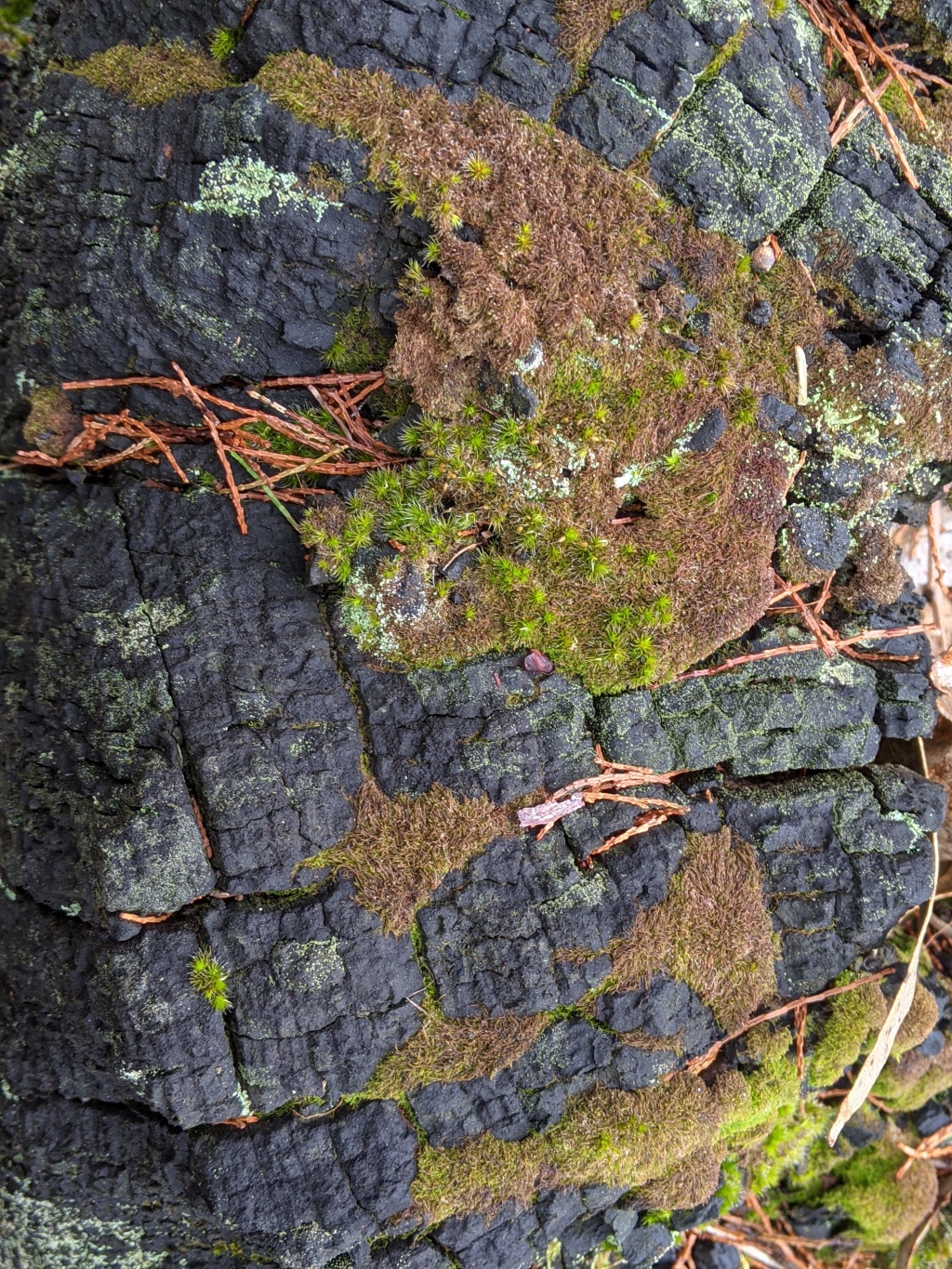Cephaloziella
Terrestrial, lithophytic, epiphytic or on logs, often those burnt, minute plants, dioicous, autoicous or paroicous. Asexual reproduction by gemmae produced from margins of reduced and erose appearing leaves near stem apex; gemmae 2-celled, smooth or papillose, ovoid, elliptic or spherical. Stems creeping, irregularly branched, wiry, sometimes with spine-like outgrowths (not in Victoria); branches emerging from stem in the axils of unmodified lateral leaves or abaxial stem and with a collar of tissue at base, rarely from an unlobed lateral leaf (not in Victoria) or from beside narrowed underleaf and without a collar of tissue at base (not in Victoria). Lateral leaves quadrate in outline, bilobed, transverse to succubous, appressed to stem (not in Victoria) to erect-spreading, distant, entire to dentate, sometimes with cellular outgrowths on abaxial surface (not in Victoria), green, becoming reddish, brownish or purplish when well-illuminated; lobes triangular to lanceolate, equal or rarely unequal (not in Victoria), rounded or acute. Underleaves absent or much smaller than lateral leaves, unlobed and ovate to lanceolate, or rarely bifid. Leaf cells quadrate, polygonal elliptic or oblong, smooth to verrucose, thin- to thick-walled, without trigones, unistratose or bistratose (not in Victoria), with 1–9 oil bodies; oil bodies spherical to ovoid, ± homogeneous. Rhizoids scattered along abaxial stem. Androecia immediately below female bracts, intercalary on main axes or on short branches with or without (not in Victoria) normal leaves, with 3–15 pairs of bracts, each usually with a single antheridium. Sporophytes on elongated leafy branches or on short branches with or without (not in Victoria) normal leaves, developing within a perianth; perianth ovoid to cylindric or clavate, well exserted beyond bracts, 4–5-plicate toward mouth where crenulate to ciliate; capsule ovoid to ellipsoid, bistratose; elaters bispiral; spores nearly smooth to verruculose.
Cosmopolitan with around 90 species recognised, but see note (Söderström et al. 2016); three species in Victoria.
Cephaloziella species exhibit a high degree of environmentally induced plasticity and this coupled with their simplified morphology, which can be largely attributed to their minute size, has made species delimitation notoriously difficult in this genus and lead to much disagreement on species limits (see Mamontov & Vilnet (2017) and references within).
Mamontov, Y.S. & Vilnet, A.A. (2017). Cephaloziella konstantinovae (Cephaloziellaceae, Marchantiophyta), a new leafy liverwort species from Russia and Mongolia identified by integrative taxonomy. Polish Botanical Journal 62: 1–19.
Söderström, L., Hagborg, A., von Konrat, M., Bartholomew-Began, S., Bell, D., Briscoe, L., Brown, E., Cargill, D.C., Costa, D.P., Crandall-Stotler, B.J., Cooper, E.D., Dauphin, G., Engel, J.J., Feldberg, K., Glenny, D., Gradstein, S.R., He, X., Heinrichs, J., Hentschel, J., Ilkiu-Borges, A.L., Katagiri, T., Konstantinova, N.A., Larraín, J., Long, D.G., Nebel, M., Pócs, T., Puche, F., Reiner-Drehwald, E., Renner, M.A.M., Sass-Gyarmati, A., Schäfer-Verwimp, A., Moragues, J.S., Stotler, R.E., Sukkharak, P., Thiers, B.M., Uribe, J., Váňa, J., Villarreal, J.C., Wigginton, M., Zhang, L. & Zhu, R. (2016). World checklist of hornworts and liverworts. Phytokeys 59: 1–828.
 Spinning
Spinning